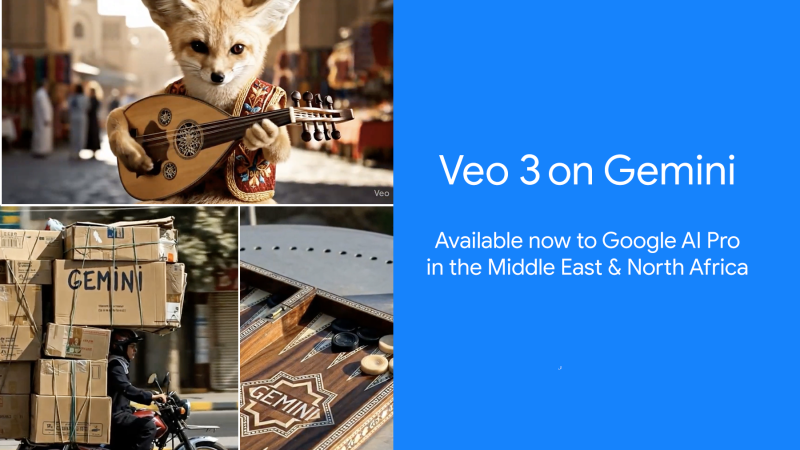Google has officially launched Veo 3, its most advanced video generation model to date, now available to Google AI Pro subscribers worldwide. The announcement marks a major leap in generative media, allowing users to create fully immersive short videos—complete with sound effects, dialogue, and music—using just a written prompt.
Veo 3 is now integrated into the Gemini app, where users simply type a description of the scene they want to see. The system then generates a custom eight-second video in 720p resolution, featuring not only high-quality visuals but also natively generated audio elements.
The release follows a preview of the model at Google I/O 2025, the tech giant’s annual developer conference. Veo 3 has since been praised for its accuracy in prompt interpretation, realistic physics, and visual coherence, positioning it as one of the most sophisticated AI video tools currently available to the public.
Unlike previous iterations, Veo 3 supports native audio generation, giving creators full control over ambient sound, dialogue, and music without relying on third-party libraries. This makes it a versatile tool for content creators, educators, marketers, and hobbyists looking to quickly prototype ideas or tell short-form stories.
To promote transparency in AI-generated content, all videos produced through Veo 3 come embedded with SynthID, Google’s digital watermarking system. The watermark is imperceptible to the human eye but can be detected by verification tools such as the newly introduced SynthID Detector, currently available to early access users.
Additionally, visible watermarks will be added to Veo-generated videos, with one exception: content produced by Ultra members in Flow, Google’s newest platform for advanced AI filmmakers, will remain watermark-free. This distinction is intended to provide more professional flexibility while still upholding ethical standards in content disclosure.
A Google spokesperson noted that Veo 3 represents a major step toward democratising creative tools, bringing cinematic AI capabilities to everyday users through a familiar and accessible interface.
The launch of Veo 3 adds further momentum to the competitive AI video generation space, where companies like OpenAI and Runway are also racing to deliver increasingly realistic, prompt-driven media.
As generative video continues to evolve, experts and creators alike are watching closely to see how tools like Veo 3 will shape the future of digital storytelling, education, and visual communication.

